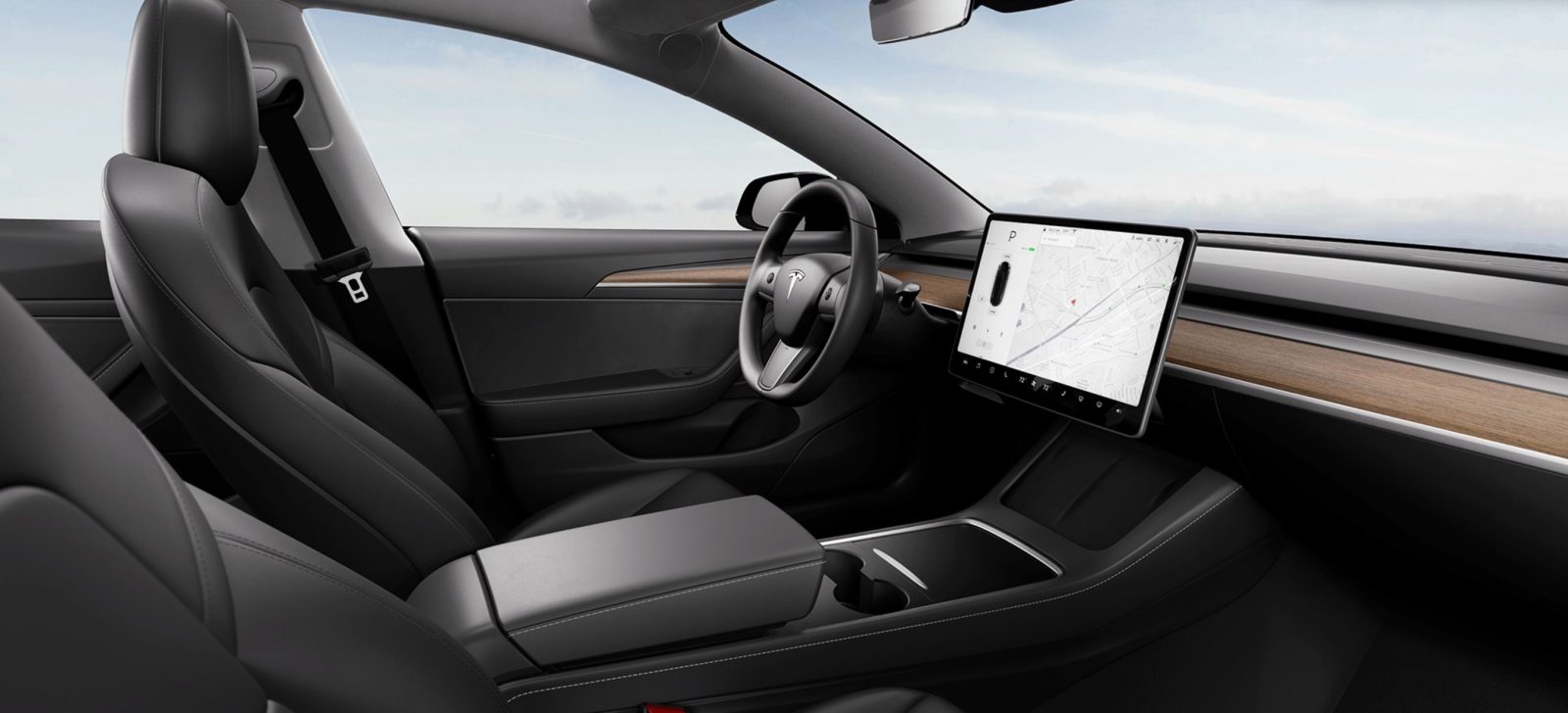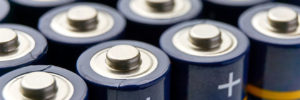The Guangzhou-based automaker will be the first to deploy lidar tech in a production electric vehicle.
Source: Electric Vehicle News
Porsche Taycan delivers electric luxury and performance
There are so many new EVs on the market or in the pipeline these days, in all form factors and all price ranges, that it’s becoming impossible to keep up with them. However, the Porsche Taycan stands out from the crowd for several reasons: it’s the flagship model of the Volkswagen Group, which is by far the most charged of the legacy automakers; it incorporates a couple of technical innovations that may start showing up in the next generation of EVs; and, by all accounts, the Taycan is the first EV that rivals the mighty Tesla in terms of performance.
Once upon a time, Porsche execs said the brand would never build an EV—but they did. They took their time (the Mission E concept vehicle debuted in 2015) and invested the necessary cash to develop a vehicle worthy of the revered Porsche name.
After a week with the Taycan, I can tell you that this spirited horse is the finest of thoroughbreds. I’m no expert on driving performance—I don’t speak the language of damping, understeer and body roll—but I have driven many, many cars, including most of the commercially available passenger EVs, and I have never driven a better. When it comes to acceleration, handling, and the overall driving experience, the Taycan is simply outstanding.
Most of the true driving experts, including the reviewers at Motor Trend, Car and Driver and Road & Track, as well as our own John Voelcker, agree.
Every electric driver is familiar with the leaping instant torque that sets even the humblest of EVs apart from legacy vehicles. However, there’s a world of difference among different models, not only in their inherent capabilities, but also in terms of the decisions their designers made in order to deliver a certain type of driving feel. As Charged Publisher Christian Ruoff and I learned, the difference between a Taycan and a Tesla, the gold standard of EV performance, is undeniable.
We took the Taycan out with his Model Y, and took turns driving the two on highways and city streets (of course, a more apt match-up would be with a Model S, which is almost precisely the same size, but we didn’t have one handy). Yes, both cars deliver plenty of head-snapping acceleration, and rock-solid cornering, but the driving experiences are starkly different. To me the Porsche’s handling feels smoother, looser somehow, and personally, I have to say I prefer it. Christian observed that the Taycan seemed to drive a little more like a gas-powered Porsche (but in a good way). John Voelcker, in his cover story on the Taycan (see our November/December 2019 issue) noted that Porsche went to extraordinary lengths to make the Taycan’s driving experience (as well as its cockpit and controls) similar to the rest of its lineup. For connoisseurs of automotive handling, I expect the choice between high-end EVs will come down to a personal preference, something akin to a guitarist’s choice of a Fender or a Gibson (my axe of choice is a boutique Strat copy).
There are many other differences between the German and the Californian. The Porsche is in several ways more luxurious, but arguably less practical—it isn’t a hatchback like Model S, but a standard sedan with a trunk (although this is surprisingly roomy, and there’s also a generous frunk). The Taycan Turbo S is also far less efficient than the Model S Performance (an EPA-estimated 68 MPGe, compared to Model S’s 97-104 MPGe, depending on the choice of wheels). In fact, the Taycan appears to be the least-efficient EV on the market at the moment (although the upcoming GMC Hummer EV will probably usurp that dubious distinction). Model S also offers more range, and costs substantially less (the Taycan starts at $103,000, and the Turbo S variant that we tested runs $185,000).
With that unavoidable comparison out of the way, let’s take a look at some of the features of the terrific Taycan. There are several ways to customize the driving experience, including three driving modes—Range, Normal and Sport—and four selectable ride heights. Most other EVs allow you to set the regen so high that the car quickly slows down as soon as you release the accelerator—this is the “one-pedal mode” that many drivers like. The Taycan’s designers felt that this was not consistent with the Porsche driving experience, so there is no such feature. However, you can turn “accelerator regen” on or off. When this is on, releasing the pedal gives you a mild reduction in speed; when it’s off, the Taycan smoothly coasts. I’m not a one-pedal guy, so I enjoyed the latter option, but again, it’s a personal preference.
The Taycan’s functions are conveniently laid out across three screens—one behind the steering wheel with your speedometer and other gauges, one on the dash and one on the center console. As in many other new cars (the Audi e-tron, for one), you’ll find the controls for climate, infotainment, etc, in pretty much the same locations as in an old-fashioned vehicle, but knobs and switches have been replaced by a touchscreen. The tactile feedback is a neato touch—the buttons vibrate when you push ‘em.
The Taycan has two technical features that are novelties for a production EV: a two-speed transmission and an 800-volt electrical system.
As we all know, most EVs get along just fine without a multi-speed transmission. However, they can offer several advantages, including better efficiency and performance, and as the technology develops, we may start seeing them appear in more new vehicles. Porsche obviously wasn’t interested in improving efficiency—it chose to use a two-speed in order to deliver super-quick acceleration. This the Taycan has in plenty, and I never noticed any gear-shifting. Road & Track’s Jason Cammisa had a different experience—he wrote that “the Taycan’s rear transmission isn’t nearly as smooth or as quick as Porsche’s PDK dual-clutch automatic. In Normal mode, the rear powertrain favors second gear, which means that large throttle inputs are occasionally met with far less violence than you expect.”
The Taycan is the first EV to use an 800-volt electrical system (400 volts is the norm). As Jeffrey Jenkins has explained, contrary to popular belief, this doesn’t mean it can charge twice as fast as other EVs at the same charging power. What it does mean is that less heat builds up in the charging cable, so higher charging power levels become practical. Porsche says the Taycan can charge at an industry-leading rate of 270 kW, and Car & Driver put it to a real-world test. (This is one category in which the Porsche can beat the Tesla—Model S supports a maximum power level of 200 kW).
Electrify America and other public networks are starting to roll out 350 kW chargers, even though the Taycan is the only current EV that can take advantage of them. This is a future-proofing strategy—as battery sizes, and demand for faster fill-ups, grow, other EV-makers are expected to follow Porsche’s lead and switch to 800-volt architectures.
Source: Electric Vehicles Magazine
Tesla updates Model 3 with new design accent and heated steering wheel

Tesla has updated the Model 3 again with a new design accent recently introduced in the new Model Y in China and the long-awaited heated steering wheel.
The post Tesla updates Model 3 with new design accent and heated steering wheel appeared first on Electrek.
Source: Charge Forward
Brexit deal forces UK carmakers to develop domestic battery supply chain
Britain’s new relationship to the EU has important implications for automakers, specifically for their battery supply chains. As The Guardian reports, all UK-EU trade in cars and parts will continue to be free of tariffs or quotas, as long as they contain enough content from either UK or EU factories.
For three years, batteries will be allowed to contain up to 70% materials from countries outside the EU or the UK. However, beginning in 2024, only 50% non-EU/UK content will be allowed. In order to avoid EU tariffs from 2024 onwards, UK carmakers will need to start sourcing battery materials from within the UK or EU, Mike Hawes, the CEO of the Society of Motor Manufacturers and Traders trade group, told The Guardian. Under the new rules, it will be “imperative that the UK secures at pace investment in battery gigafactories and electrified supply chains,” said Hawes.
Ian Henry, of the consulting firm AutoAnalysis, says the UK car industry will need to build an entire supply chain, including manufacturing chemically complicated parts such as cathodes. “By the mid-2020s, the UK has got to be doing a lot more than just assembling bits from a kit,” said Henry. “Several core processes in battery manufacturing will have to take place here in order for the UK to have a viable electric vehicle industry.”
At the moment, the vast majority of EV batteries come from Asian firms, including China’s CATL, Korea’s LG Chem and Japan’s Panasonic. European carmakers and governments have begun addressing this issue, investing billions of euros in new battery plants. At least 10 major projects are underway, involving companies including Sweden’s Northvolt and the French oil giant Total. The UK is behind the curve—there are as yet no fully funded plans to begin battery production in Britain.
Startup Britishvolt is the only company currently working on a battery plant in the UK. The company recently announced plans to build a battery factory on the site of a former coal-fired power station in Blyth in northeastern England. It hopes to begin production of lithium-ion batteries by the end of 2023.
A Britishvolt spokesman said the Brexit deal’s provisions fit perfectly with his company’s plans, and that Britishvolt’s new plant will allow it to serve both the UK automotive industry and carmakers in Europe.
Source: The Guardian
Source: Electric Vehicles Magazine
Toyota CEO's Anti-EV Diatribe May Be Puzzling, But It's Not Unusual
Has Mr. Toyoda forgotten his own history?
Source: Electric Vehicle News
Tesla Giga Shanghai: MIC Model Y Are Flooding Factory's Parking Lot
Let’s take a look at the site as of the end of 2020.
Source: Electric Vehicle News
Let's Take A Quick Look At The MIC Tesla Model Y
Thousands of customers are already waiting to buy it, but will it beat the Model 3 in terms of volume?
Source: Electric Vehicle News
Testing Tesla Model Y City Street Efficiency In The Rain
It takes plenty of different range and efficiency tests to help you understand your car’s capability.
Source: Electric Vehicle News
The Best and Worst Electric Vehicle Stories Of 2020
E For Electric looks back on the EV news of 2020
Source: Electric Vehicle News
Will Cars Become The Next Ultimate Gaming Consoles Thanks To Tesla?
Tesla may have been the first automaker to introduce an in-car gaming platform, but it won’t be the last.
Source: Electric Vehicle News


